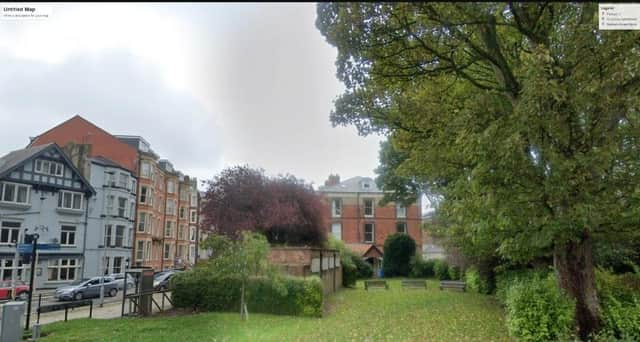Council defers demolition of abandoned Scarborough toilet block that ‘might be WWII air raid shelter’


Councillors on the Scarborough and Whitby area planning committee have voted to defer a decision on the levelling of an abandoned toilet block after it came to light that the site might be a historical air raid shelter with heritage value.
Writing to the council, Dr Bob Clarke urged the authority to reconsider the destruction of “one of Scarborough’s final physical vestiges of the Second World War”.
Advertisement
Hide AdAdvertisement
Hide AdThe abandoned toilet block which was set for demolition is located on the Prince of Wales Terrace in Scarborough.
Dr Clarke, who said he is a “conflict archaeologist and 20th-century military specialist”, told the council that demolition of the toilet block would “further denude the WWII landscape of Scarborough to a point where there is no evidence of the population’s involvement… during the conflict”.
However, the history of the “redundant” toilet block which was set to be obliterated by the council has been disputed, according to planning officers, who asked that a final decision be deferred until North Yorkshire Council has time to further investigate its history.
Speaking at the meeting on Thursday, May 11, a planning officer said: “It has been suggested to officers through the representations that the building is a Second World War air raid shelter and one of the only ones that is remaining in the town that is an above-ground shelter.
Advertisement
Hide AdAdvertisement
Hide Ad“That is on very good authority but it is disputed by others.”
The officer added: “Nonetheless, that needs to be explored by the applicant and to allow them to do so, the officers recommend that the application is deferred until such a meeting that the applicant has had the chance to deal with that issue.”
Dr Clarke, who wrote to the council, said that evidence of the Second World War in Scarborough – while more limited than that of WWI – could be found in the form of “spigot mortars, pillboxes, obstacle ditches, and many concrete obstacles”.
“What is not immediately evident is the experiences of the town’s population between 1939 and 1945.”
Advertisement
Hide AdAdvertisement
Hide AdHe added: “I urge the council to consider carefully the heritage value and potential of this monument to the civilians of old Scarborough that spent many nights in such shelters over the conflict.”
Councillors on the committee voted unanimously in favour of deferring the decision until a later date.